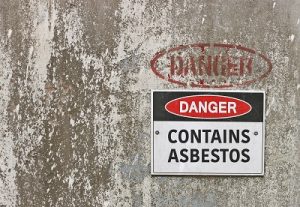
Winter’s coming: are you prepared?
This autumn there have already been incidents of severe flooding, hurricanes and even snow. Although, it is tempting to hope that such extreme weather is just a one-off, our changing climate means that we are likely to experience more severe weather, not less.
The Climate Change Committee has warned that “future UK winter weather may be dominated more often by weather patterns associated with wetter, wilder and windier winter weather”. And although bitingly cold winters are not a key part of the predictions, variability is, meaning that businesses would be wise to properly prepare for winter regardless of how cold, or snowy, it might be. The cold, icy conditions experienced during the winter of 2018/19 — which led to temperatures plummeting to -14°C in the Cairngorms in Scotland and bringing some cities to a halt — were estimated to have cost the UK economy £1 million for every day of disruption.
Preparing for winter
To prepare for inclement weather, a winter plan should be put together with an associated risk assessment. This should be carried out well in advance, and revisited and revised throughout the cold period. The winter plan will be part of the suite of contingency plans already in place that outline what could happen in worst-case scenarios, and how these risks are mitigated and managed. For example, how would the business fare if power supplies went down?
Due to the impact of Covid-19 and the resulting lockdown, last year’s winter plan was likely to have been radically different to those preceding it. Some aspects may be still relevant; others may need adapting based on the current and anticipated measures for Winter 2021/22. As part of any planning process, include a review of how the plan fared last year, as well as the year before, so that new approaches can be adopted where processes were less than ideal.
Some areas that could be addressed as part of winter planning are outlined below.
Preventive maintenance
Bad weather and high winds can expose any building flaws, especially in areas such as roofs or windows. Before winter comes, carry out a condition survey to identify any potential problems, and prioritise them for repair.
Similarly, regularly inspect heating systems and any other plant required for emergencies, such as back-up generators. Proactive maintenance and regular inspections will help reduce the chance of failure when these bits of kit are most needed. Consider setting additional “winter” KPIs to help track and monitor those tasks that need to be given higher priority during this time.
Proper ventilation will also be crucial this winter to help reduce the spread of Covid-19. Options such as opening windows may become less appealing as it turns colder, and so mechanical ventilation will be relied upon. Again, preventive maintenance will help ensure that all systems are functioning well.
Slips and trips
Snow and ice are two obvious winter problems that can be a hindrance to any business. Make sure that supplies of grit are fully stocked, and that weather warnings are regularly checked so that the grit is used when needed. Staff employed to spread grit need proper personal protective equipment (PPE) as well as a map of where to grit, and priority areas. Keep records of where and when gritting takes place and fully train staff. Also ensure that any gritting is carried out in a Covid secure manner, for example, by providing individual PPE.
Do not forget inside the building too — staff bringing snow and ice in on their shoes can create slippery surfaces, so consider adding extra mats at the front doors to help keep the building clean and to absorb any extra wetness.
Remember that slips and trips are not just isolated to times when snow falls. Darker mornings and evenings can cause more accidents, as can autumnal leaf fall. As part of maintenance checks, ensure external lighting is adequate and that entrances and pathways are kept clear of leaf litter and debris.
Staff working outdoors
As part of the maintenance team there might be people who are regularly working outdoors. Although minimum working temperatures do not apply for these workers, there is, however, still a duty of care to ensure that people are not working in unsafe conditions. This could mean that managers need to look at rotas to avoid staff working outside in the cold for long periods of time, as well as making sure there are adequate facilities for people to warm up and take a break. The availability of facilities is especially critical if breaks need to be staggered due to Covid-19, or if the usual facilities have changed. Additional PPE to account for the weather can also be appropriate — for example, having good waterproofs.
Managing sickness
Along with bad weather comes the dreaded winter flu. This year, seasonal flu may also coincide with another wave of Covid-19 infections meaning that managing sickness will be more important than ever. Health and Safety representative and managers can play an important, if not visible, role in reducing the impact of staff illness spreading. For example, by stocking up on soap and alcohol gels and working to promote “hands, face, space” messaging and other good behaviours to reduce the spread infections.
Winter doesn’t always mean catching a cold. For some, it can also bring about the onset of Seasonal Affective Disorder (SAD) as well as a propensity for less exercise and a change in diet. The impact that Covid-19 has had on mental health is well documented, and the onset of winter can make any pre-existing condition worse. Keep this in mind; perhaps renew or re-launch any wellness campaigns or promote any mental health support that is offered by the business.
In short, plan ahead. Make sure that a winter plan is in place, any maintenance is carried out and that the business is ready should the worst happen. If bad weather does strike, then remember to review how it went afterwards and implement any changes that might be necessary.
Contact us for further information or advice.

Toolbox Talk: Slips, Trips and Falls
Why have this talk? Every year many accidents resulting in injuries occur through slips, trips, and falls. Most of these slips, trips and falls that occur are easily preventable with a little consideration and care.
What will this talk cover? The causes and prevention of slips, trips, and falls.
What causes slips, trips and falls?
How to prevent slips, trips and falls
Questions for employees
Do you have any questions for me?
If you require further advice, please contact us.

Toolbox Talk: Manual Handling
Why have this talk? Manual handling causes more than one third of all workplace injuries and features in almost everyone’s job in almost every sector.
What will this talk cover? The considerations and good techniques used to avoid injury when manual handling.

Do you have any questions for me?
Contact us for further information.

Fire Prevention and Control Toolbox Talk
Why have this talk? Fire Prevention and Control Toolbox Talk. Fire kills and injures many people every year. All employees should be aware of their responsibilities to prevent fires and everyone must know what to do in the event of a fire.
What will this talk cover? Fire prevention, actions to take on discovering a fire and what to do if a fire takes hold.

REMEMBER: Be aware of the surroundings in your workplace and familiarise yourself with the escape routes and emergency procedures. You won’t have time if a fire breaks out.
Contact us if you require further information.

Asbestos Toolbox Talk
Why have this talk? Asbestos Toolbox Talk. Asbestos is a naturally occurring mineral and because of its excellent fire retarding and insulating properties it was widely used in the building industry in the 1980s.
Research has shown that breathing in asbestos fibres may cause lung disease and cancer and it is currently the greatest single cause of work-related deaths in the UK with several thousand people dying each year. The delay between asbestos exposure and disease can range between 10 and 50 years.
What will this talk cover? Where you might find asbestos and how to work around it.
| The use of asbestos is now banned but any building that was built before 2000 could have asbestos in it. As long as the material is not disturbed, workers should not be alarmed. If existing asbestos materials are in good condition, they can be left where they are as long as their condition is regularly checked to ensure they do not become damaged. Products where the asbestos is bound tightly (eg asbestos cement sheets or flooring tiles) are less hazardous than products such as pipe lagging which easily give off fibres, but all products need careful handling by trained workers. |
| The only way to reliably check if asbestos is present is to have a sample of the material examined in a laboratory. All potential asbestos-containing materials must be treated with caution. |
Do you have any questions for me?
Contact us for further information.